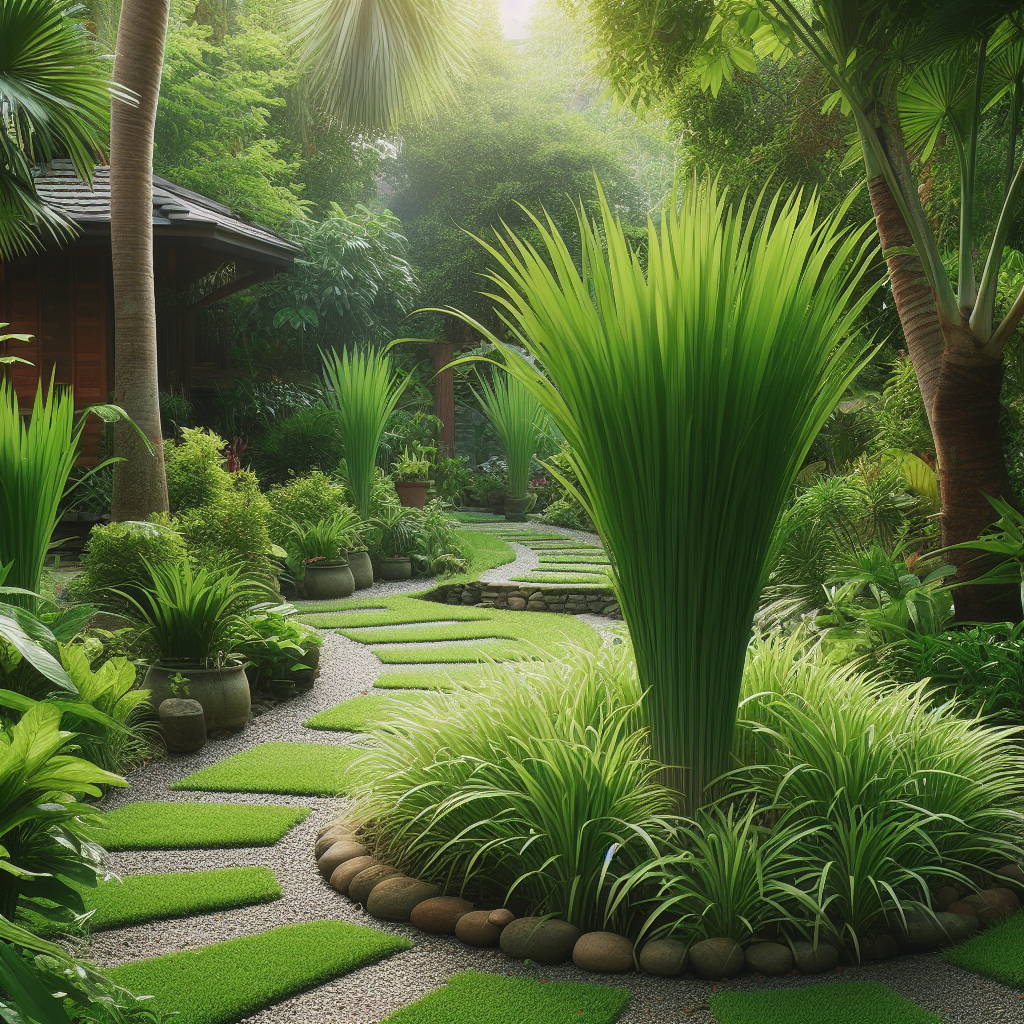Dive into the enchanting world of Cymbopogon flexuosus, commonly known as East Indian Lemongrass. In this guide crafted for hobbyist gardeners, we’ll explore the nuances of its botanical features, uncover its versatile uses, and provide insights into successful cultivation.
Botanical Overview
- Botanical Name: Cymbopogon flexuosus
- Common Names: Lemongrass, Malabar Grass, Cochin Grass
- Family: Poaceae (formerly Graminae)
- Origin: Indian
Plant Description
East Indian Lemongrass stands distinct from its West Indian counterpart with a height reaching up to 1.5m. Sporting deep purple stem bases, it boasts a robust nature, resistant to rust. This variety exhibits an attractive purplish seedhead in most regions. Adapted to hot, wet summers and dry, warm winters, it thrives in a variety of soils, favoring rich, moist loams. However, it dislikes waterlogged conditions and showcases resilience against drought. In areas prone to frost, refrain from cutting damaged tops until all frost risks have passed. Ideally suited for warm temperate to tropical climates.
Uses
- Culinary Delight: While less commonly used for culinary purposes, East Indian Lemongrass is a good source of vitamin A. The leaves are commercially sought after for herbal tea production.
- Mulch Production: The grass can be continuously harvested during warmer months for use as mulch. Its pest-repellent properties add an extra layer of advantage.
- Erosion Control: Planted strategically on steep banks, East Indian Lemongrass serves as a natural and aromatic solution to control erosion.
- Garden Edging: The plant’s growth pattern makes it an excellent natural barrier, preventing the encroachment of running grasses around vegetable gardens.
Planting Details
- Propagation: Primarily propagated through division.
- Planting Time: Optimal planting time is spring in cooler regions; in tropical areas, it’s recommended during the wet season.
- Plant Spacing: Plant rhizomes with a spacing of 1m and maintain 0.5m between rows for robust growth.
Harvesting Tips
Harvesting for oil distillation begins when the clumps are 4-8 months old, repeating every 3-4 months. This practice can be sustained for about four years, with fresh grass yielding approximately 0.2-0.4% oil. This translates to 40-112 kg of oil per hectare per year.
Vibrant aroma and multifaceted uses
East Indian Lemongrass, with its vibrant aroma and multifaceted uses, is an asset to any hobbyist gardener’s repertoire. By understanding its planting nuances, applications, and harvesting cycles, you can cultivate a thriving patch of Lemongrass that not only elevates your gardening experience but also brings a touch of exotic allure to your green haven.
